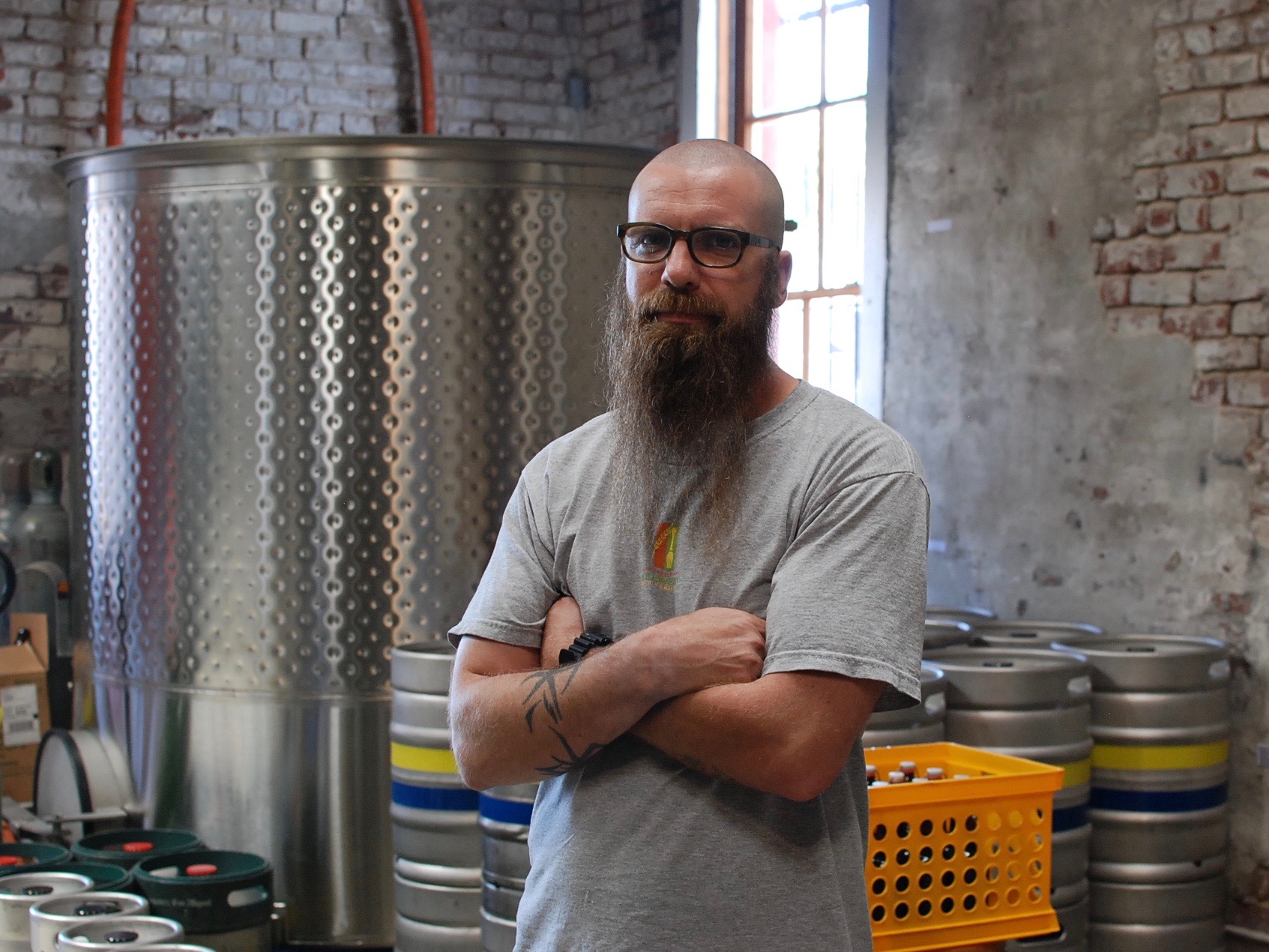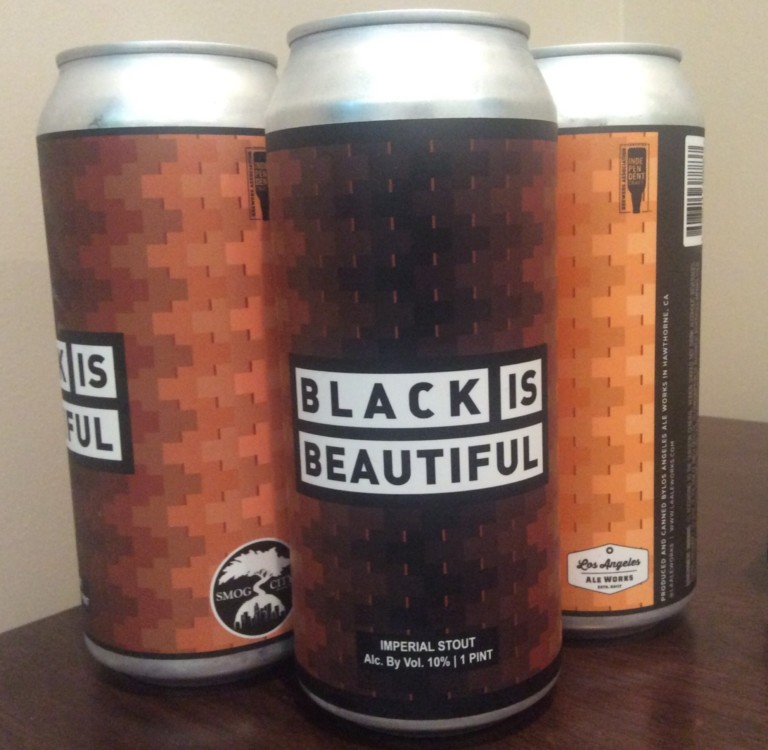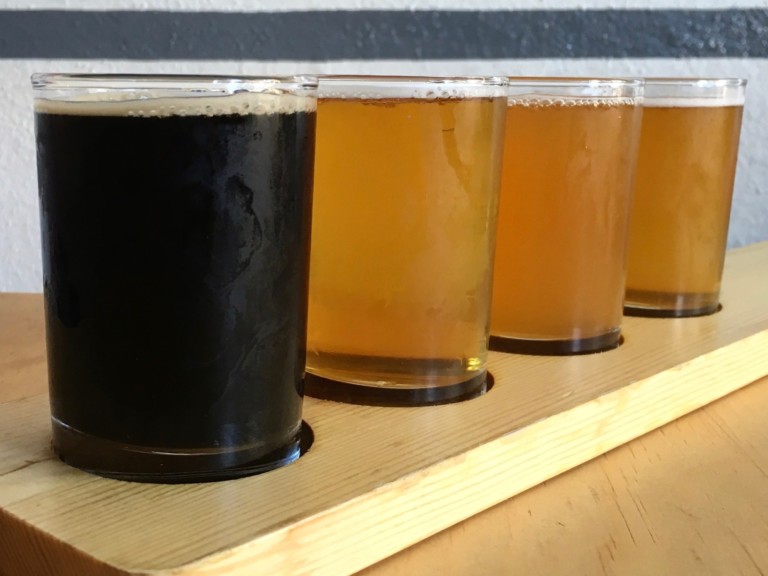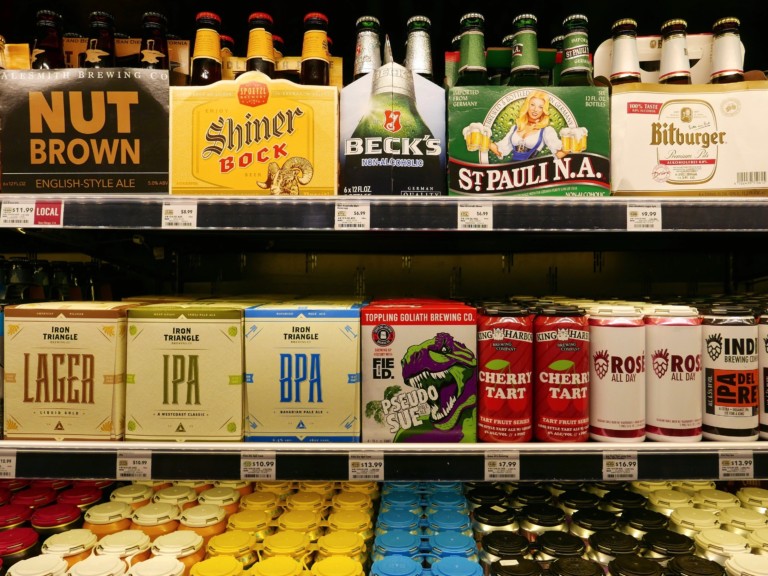Beer doesn’t have to be based just on ingredients. Sometimes, the liquid that ends up in bottles, cans or kegs can be dictated by surroundings. That was the case on June 10, 2009, when Adam Lamoreaux opened Linden Street Brewery in a building that went up in 1890 as Standard Underground Cable. This was Westinghouse’s base of western operations as the U.S. switched from gas to electricity. The offices still houses original pine floors and the more-than-century-old water tower supports. Lamoreaux, a U.S. Navy veteran and a Bay Area denizen by birth, was inspired by the building. He did his research and learned which beers were being produced in 1890, and promptly developed recipes for Urban Peoples’ Common Lager and Burning Oak Black Lager. On July 6, we met in the brewhouse, which is about to jump from 1000 barrels to 2500 barrels worth of production per year. Lamoreaux is also looking to add a tasting room in the near future, but first, he better explained his background and approach.
What inspired your initial interest in beer?
Initially, I really kind of got into beer while I was in the Navy, and I was 19 years old. We just finished up my first tour in the Gulf, and when you’re in the Navy – don’t ask me why – when you come home from the Gulf, you actually go down to Australia before you come home to California. This was the early ’90s. We pulled into Western Australia, a town called Perth. Basically by then microbrews kind of kicked in and I had a chance to taste my first real beers. I fell in love with it. Basically those beers down in Australia – one in particular called Dogbolter, which was this dark, chocolaty lager – that kind of kicked off my passion for beer, and I spent the next few years homebrewing and further developing my knowledge of beer while not being old enough to go to beer bars. I was old enough to buy malt and hops and yeast and all of those things, so my brewing career was kind of born out of necessity, but as soon as I turned 21, I pretty much wasn’t doing much brewing. I was just going around to all the different brewpubs and beer bars.
Where were you living at that point?
Here, in the Bay Area. I was lucky. I grew up in the Bay Area and I got stationed in Alameda, so I’ve sort of always been a Bay Area kid. My spots back then in the mid ’90s were Jupiter, of course, Triple Rock, and over in San Francisco there used to be this brewpub called 20 Tank which was hands down the best brewpub ever.
Oh really? How come?
It was just great. It was right across from Slim’s. Talk to anybody who was around when 20 Tank was around and they’d agree with me. It looked and felt just like what a brewpub is supposed to look and feel like. It was big and beautiful and authentic and something San Francisco could really be proud of. I think there’s still a couple websites out there designated toward remembering 20 Tank because there are so many people out there that miss it. That was one of my big spots for sure. When I got out of the Navy in ’98, basically I knew the beer industry was what I wanted to get into in one aspect or another, I wasn’t sure what.
What was that first beer related job?
It was assistant brewer for a brewpub chain called Steelhead. They have them up in Oregon and I worked at the Steelhead that was here in Fisherman’s Wharf, in San Francisco, as well as the one that was down in Burlingame, as the assistant brewer. I got the chance to do that for about a year, and learned a ton. Working in two different brewpubs was amazing, because in brewpubs, you’re making so many different styles of beer all the time. You’re always keeping six or seven beers on tap, so I got a chance to see a lot of different beers get made in a short amount of time, and see how the different equipment – professional sized equipment – really works. But I also learned that I don’t really like brewpubs too much because they are just restaurants that happen to make beer. I wasn’t a big fan of the restaurant business. So I got a job up at a production brewery up in Mendocino called Anderson Valley. I was one of the cellar rats up there, and I got a chance to see production brewing, and that’s when I really fell in love. With my Navy background and with my background in general, I felt like production brewing was more my style and what I was into, but Mendocino was kind of a hard place in the middle of nowhere to build a family and career, so I came back down to the Bay Area and took a job as a beer and wine buyer for Whole Foods for a little while. I felt like I’d felt like I’d seen pub brewing, production brewing and retail sales of beer, kind of all the different sides of beer, and that’s what helped me develop my initial ideas for what I wanted to do with a place like this. I just kind of took all the stuff I learned and plugged it into this place. This is actually the first production brewery in Oakland since 1959. That was a big thing for me. I knew it would help me out a lot as far as having a chance to get started and sort of take off. If we could bring beer back to a place that hasn’t had it in a long time, that’s half the story there. So we got really lucky to be that, here in Oakland, and it’s been great.
What was the first homebrew that you made, and how did it turn out?
If I had to guess, the first homebrew was probably a pale ale. I made a lot of pale ales in the early days, just because it seemed middle of the road. I’ve got to say, I don’t know how much a brewer I am right now either, compared to other guys, but I’ve always been kind of lucky with beer. It’s always come out pretty good, some better than others, but in my life I’ve never really made a beer that was just terrible. I also don’t venture out too far into left field either. I don’t try to make the exotic beer with all sorts of exotic ingredients, stuff that nobody’s ever used before. I’m more of – I don’t know if I’d say a purist – but a classicist. I like the classics. Malt, hops, yeast, water, simple. Ideally for me I’d like a beer that’s 4.5 – 5.5% alcohol, but still plenty of flavor. Out here on the West Coast, there are a lot of beers higher than 5.5% alcohol and hopped to the gills, and that’s fine. Every once in awhile I enjoy those styles of beer too, but I’m more of a session beer kind of guy. I’ve always pretty much focused on the middle of the spectrum.
What are the core beers that you can’t imagine not being in the rotation?
For us, my beers, we call old California lagers, so because this building was built in 1890, I decided pretty quickly that I wanted to make beers like you would have had in Oakland in 1890. It didn’t take us long to realize it was all steam beer around here, and it wasn’t just Anchor Steam, there were all sorts of steam breweries around here. But you can’t call it steam anymore, because Anchor actually trademarked the term steam, so when they did that, the style became called something called California Common. I don’t really even know what California Common means, so the first beer we made, I called our Common Lager. The full name is Urban Peoples’ Common Lager. For us, anything outside of old California lager, I can’t really see. We might do some one-offs just for different reasons, collaborations, whatever, but as far as Linden Street beers go, my beers, they’ll all be old California lagers. Basically steam beers without calling them steam beer. The first one we called Urban Peoples Common Lager. The other beer is called Burning Oak Black Lager. Those are really the only beers we make on a regular basis. We still are kind of a two-trick pony.
Have you collaborated with anybody yet?
Yeah, I collaborated with a bunch of homebrewers, for one. We have a really good homebrew competition that happens in the Bay Area every year called the World Cup of Beer. I’ve collaborated with the last two Best of Show winners from that competition. We’ve taken the beer they’ve won Best in Show with and made it here, and we’re going to do that again with this year’s winner pretty soon. Then we’re working with restaurants. We’ve collaborated a little bit, but not as much as the big guys. For us it’s just the capacity. We don’t have to have the capacity to go off schedule too much. We’re not able to make the black or the common fast enough right now. Anytime we make a beer outside of those, it messes up the whole cycle. We run out of something and everyone gets mad. For us, right now, the focus is just expansion, trying to meet demand and reach capacity and just keep growing.
Would you say you have any mentors?









Leave a Comment